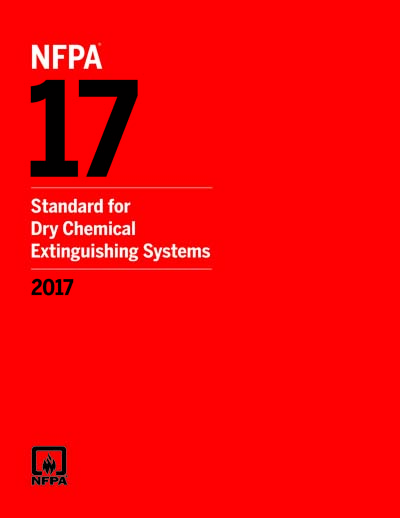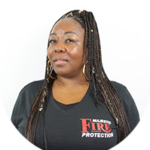NFPA 17A Standard for Wet Chemical Extinguishing Systems

Cooking has become the leading cause of fire-related causalities worldwide. According to NFPA's 2020 report" U.S Home Cooking Fires," almost 49% of home fires in America are caused by unattended cooking. The report highlighted that nearly 173,000 cooking fires occur in homes every year, resulting in 550 deaths and 4,820 civilian injuries.
That is quite appalling!
Considering the escalating Kitchen related fire cases in the country, NFPA provides necessary instructions and recommendations regarding the Wet chemical extinguishing systems to control cooking-related fire accidents.
Wet chemical extinguishing systems
Wet chemical fire extinguishing systems are most commonly used to provide fire protection in commercial cooking operations. These commercial cooking operations include restaurants, plenums, institutional hoods, ducts, filters, and other cooking appliances.
NFPA 17-A Standard for Wet Chemical Extinguishing Systems
NFPA 17A: Standard for Wet Chemical Extinguishing Systems contains necessary information about the design, installation, maintenance, and inspection of wet chemical extinguishing systems. The standard provides all recommendations required for proper selection of :
· Minimum and maximum pipe lengths
· Quantities of agent used
· Specific pipe sizes
· Nozzles size and pressure
· Flow rate
In case of fire, a specific liquid agent is sprayed by extinguishers with a pre-determined flow rate and pattern from the nozzle. Upstream of the nozzle, a Stainer shall be present along with a protective cover cap to prevent the entry of contaminants or foreign particles in pipes.
Requirements for Wet Chemical Extinguishing Systems installation.
According to NFPA 17A, wet chemical extinguishing systems shall be approved by an authorized person. Before the installation, the installing contractor shall ensure that appliances, pipes, hoods, and ducts are correctly positioned and protected according to the standard. The team shall verify that accurate nozzle and pipes are used and fastened in the system to protect against the fire.
Piping integrity test.
After verifying these parts, the next step required, according to NFPA 17 A, is the piping integrity test to ensure the continuous flow of liquid. For this purpose, NFPA 17A includes four main steps :
· Physical examination of pipes to check tightness.
· To check the normal operating pressure of the system using nitrogen or dry air.
· Confirmation that the nitrogen or dry air is discharged out of the nozzle properly
· Verification shall be done by the authority having jurisdiction.
After the verification is completed, all the devices need to be appropriately labeled with specific instructions given by NFPA 17A. If any other fire suppression system is already installed in the building, the AHJ will check the system to ensure its compliance with the wet chemical fire extinguishing system.
NFPA 17A requirements for the selection of proper nozzles
The nozzle should be accurately marked to assist in the selection of the proper nozzle requisite for operation. NFPA 17 A also ensures that the entire structure comprises anti-corrosive, non-combustible material such as steel or brass.
While selecting the proper nozzle for the system, the nozzle coverage area and its purpose are considered. For example, for duct xx-tr nozzle with 2 flow point shall be used while xx-ed nozzle with 4 flow point is required for Plenum.
Appropriate tanks that comply with nozzles
NFPA 17 A covers recommendations about selecting tanks with appropriate capacities based on Flow point in addition to nozzle requirements. Flow point actually refers to nozzle flow capacity, which determines the tank capacity.
Characteristics of Wet Chemical extinguishing systems
Wet Chemical fire extinguishing system shall have the following characteristics according to NFPA 17A.
· Shutoff devices having the ability to shut down all heat and electrical sources automatically.
· Manual activation even in case of the automatic system except for the systems for common exhaust ducts
· Monitoring devices for electrically controlled automated systems to provide an audio or visible signal in case of dysfunction.
· If any other fire suppression system is present in the building, such as a fire alarm system, the two systems need to be connected so that both can respond in an emergency.
Proper testing of Wet Chemical Fire Extinguishing Systems
Apart from the proper design and installation of wet chemical fire extinguishing systems, proper maintenance and testing are also crucial to ensure the protection you need.
According to NFPA17A:
These systems need to be tested once a month to confirm that all parts are correctly located and protected. Make sure that nothing is obstructing the actuators and they have not been tempered. Thoroughly examine the system to check all the tags and certificates are in place.
NFPA 17-A requirements for inspection of Wet Chemical Fire Extinguishing Systems
NFPA 17A requires a comprehensive and detailed inspection of the system twice a year and after every activation according to its instructions. The inspection involves the examination of the system to check whether the hazard has changed the system or not.
It includes assessing all parts, including nozzles, pipes, and other devices, to ensure that there isn't any obstruction and the agent is properly flowing.
Conclusion
The Technical Committee responsible for NFPA 17A formulated 11 minimum requirements with the objective of providing a thorough procedure for approval, testing, and maintenance of systems. All the instructions provided by NFPA 17-A are necessary to follow before and after the installation of Wet Chemical, fire extinguishing systems to ensure fire protection and safety.



